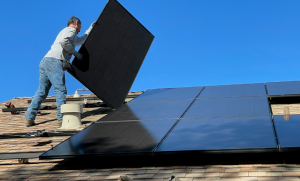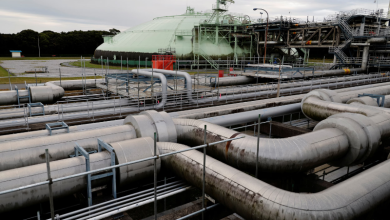Solar panels in Sahara doesn’t sound like a bad idea. But researchers are sceptical.

The biggest desert on the planet remains unused for several purposes. The Sahara Desert is a unique ecosystem housing a very arid climate and offering shelter to a limited number of species. It means that the massive land can be used to install solar panels. Right?
Solar energy is becoming increasingly popular and important as the climate crisis rages on. It is a great alternative to polluting fossil fuels and can help limit global heating to 1.5 degrees Celsius above pre-industrial levels (as stated in the 2015 Paris agreement).
The Sahara Desert gets abundant sunlight across the year. The idea of installing solar panels in the region is not unique. It has been thought of over and over by researchers globally. They imagine and do calculations and compare the results to arrive at a decision.
Disastrous effects not limited to local geography
Researchers imagine it might be possible to transform the Sahara into a giant solar farm, capable of meeting at least four times the global community’s current energy demand. But they are sceptical about covering the entire arid environment with solar panels.
The black surfaces of solar panels absorb most of the sunlight that reaches them. But around 15% of that incoming energy gets converted to electricity and the rest gets back to nature as heat. On a larger scale, these panels can return a lot of energy as heat, affecting the climate.
If these effects were just local, they might not matter in a sparsely populated and barren desert. But the scale of solar panel installations needed to sizeably reduce the global fossil energy demand would be vast, covering thousands of square kilometres.
Heat returned to atmosphere: solar panels vs sand
Heat re-emitted from an area this massive can get redistributed in the atmosphere through air, posing both regional and global effects. In fact, a 2018 research revealed that when the size of the solar farm reaches 20% of the total area of the Sahara, it triggers of feedback loop.
The high amount of heat emitted by the darker solar panels, in comparison to the highly reflective desert soil, can cause more monsoon rainfall, leading to more vegetation. Since plants absorb light better than sand and soil, more water is evaporated, leading to more vegetation.
This scenario doesn’t appear to be totally bad. But covering just 20% of the Sahara with solar farms raises local temperatures in the desert by 1.5 degrees Celsius, according to an advanced Earth system model. At 50% coverage, the temperature increase is 2.5 degrees.
Solar panels in Sahara can impact Saharan dust too
This heat can eventually spread across the globe by atmosphere and ocean movement, raising the average global temperature. The shift is not expected to be uniform though – for example, the polar regions are likely to heat up faster, leading to more see ice loss and rise in sea levels.
This massive heat source in the Sahara Desert can reorganise global air and ocean circulation, affecting precipitation patterns. Researches predict droughts for the Amazon region and more frequent tropical cyclones hitting North American and East Asian coasts.
There is also the possibility of severe impact on Saharan dust. The dust, carried on the wind, is an important source of nutrients for the Amazon rainforest (or the lungs of the planet) and the Atlantic Ocean. But researchers are only beginning to understand the potential consequences.




